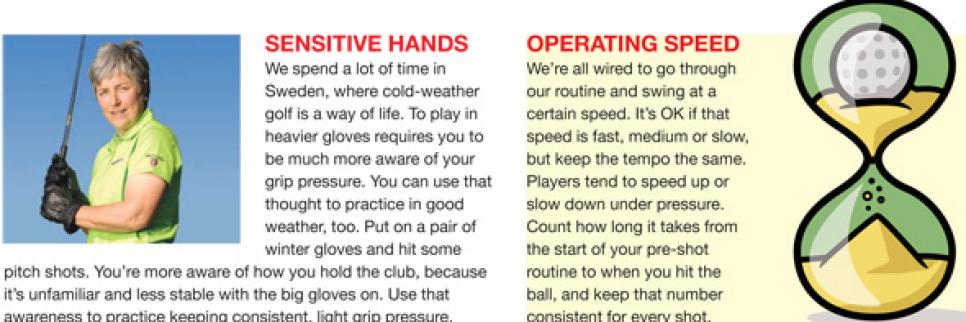Instruction
Training Your Tempo

A score comes from executing individual shots, one after the other. To break your score down into those measurable increments, make a second scorecard for your next round. On that card, keep track of your sense of the tempo you had for each full swing. Make a check in the box for each swing you made with great tempo, say 70 percent of full effort. Match the tempo numbers with your score when you finish the round, and you'll see the connection between staying in control and reducing your handicap.
The 90 scoring barrier is one that resonates for so many players: When you can consistently shoot in the 80s, you feel you're a good player. The desire to break that scoring goal can do some damaging things to your thought process, though. Instead of focusing so much on things like score and outcome, you need to break it down to a smaller set of decisions that are actually under your control. If you train yourself to try to execute shots according to your plan and let the results take care of themselves, you'll be pleasantly surprised by the outcome. The anxiety about the scoring goal will melt away.
PRACTICE SPECIFICS
There's a difference between practicing and warming up. To get better, you want the practice experience to replicate the playing experience as closely as possible. Pia likes to imagine grandstands on either side of her as she practices with her driver -- and she doesn't want to hit any shots into the crowd. Another way to replicate playing is to hit shots in the order you'd hit them on the course. Play the first few holes of your course, shot by shot, on the range before your round.
